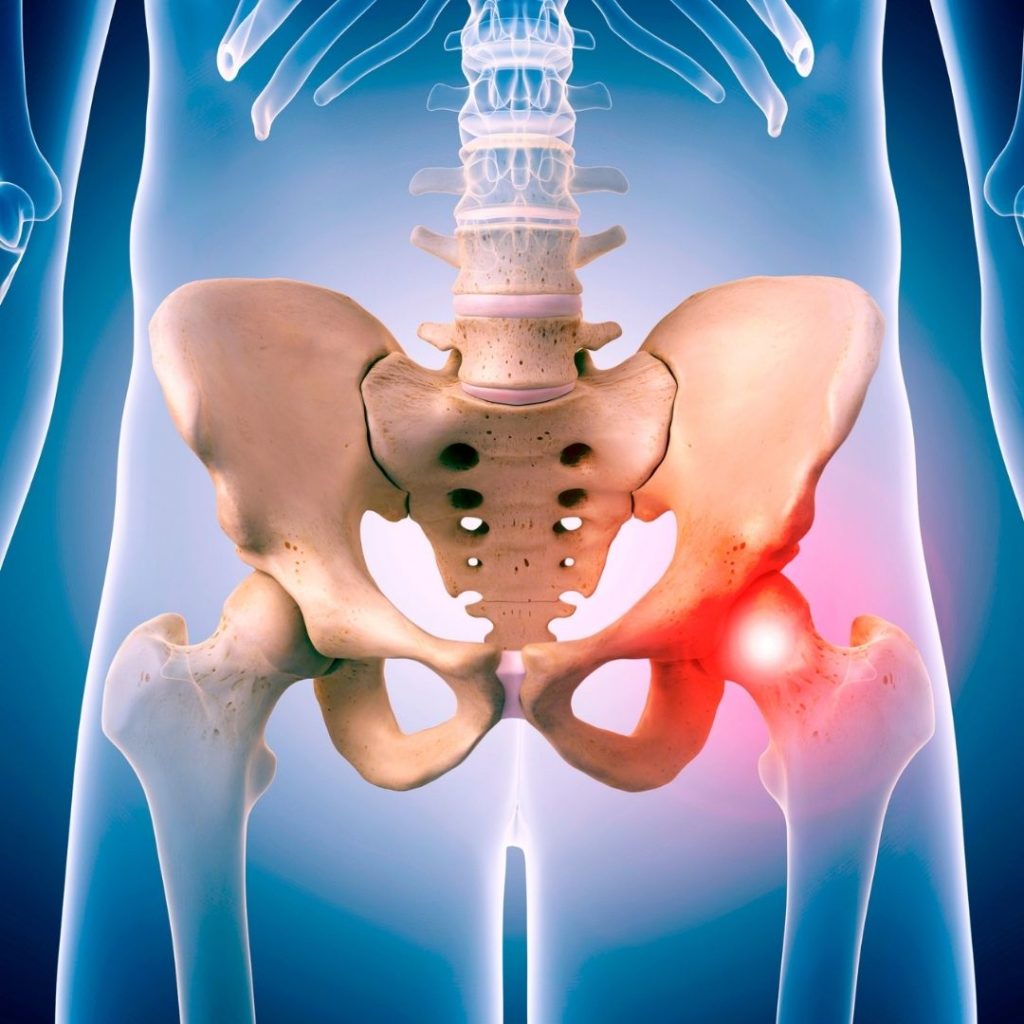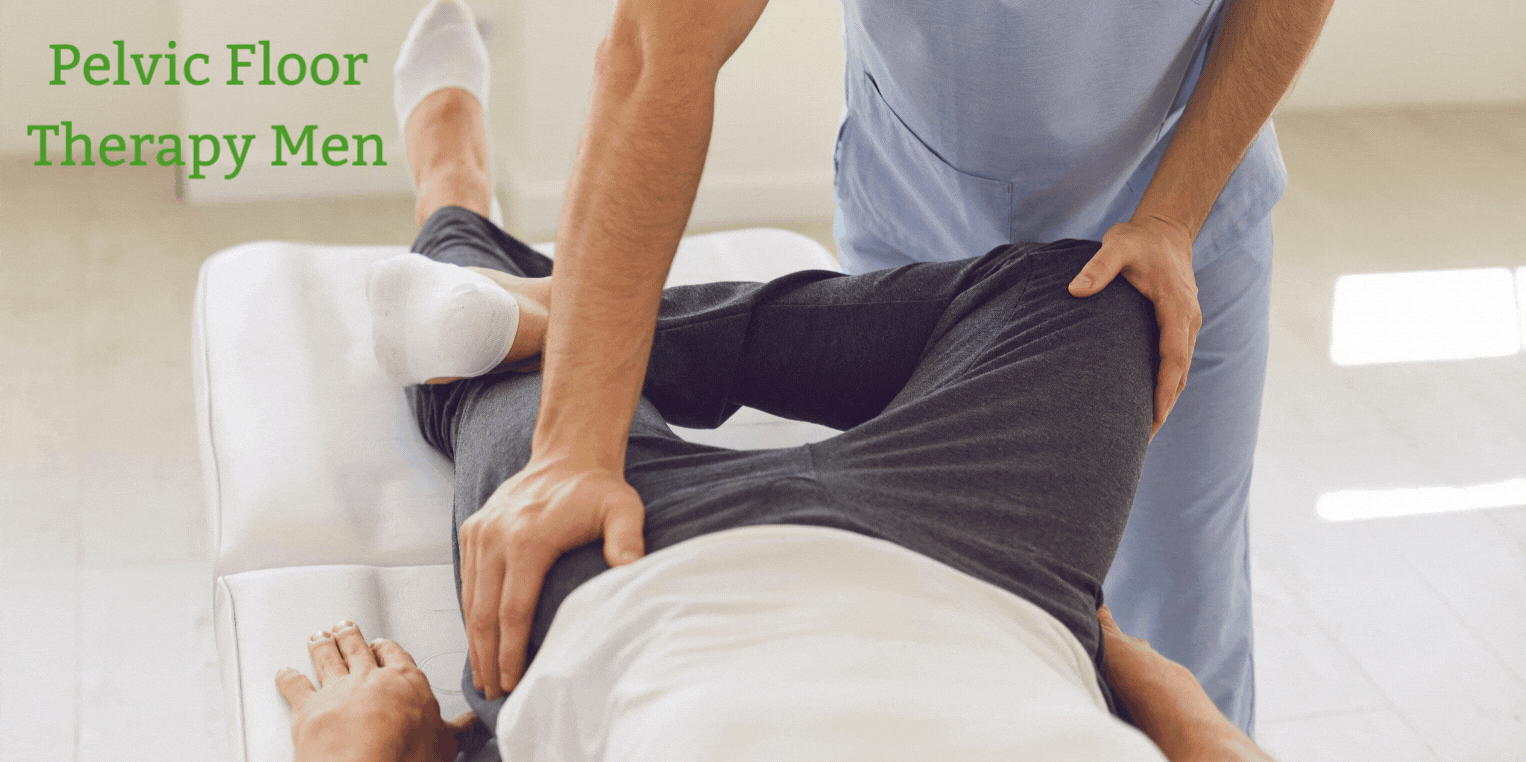Pelvic floor physical therapy is a treatment that uses physical therapy to provide an effective reconditioning of pelvic floor muscles. The goal of the treatment is to improve the strength and function of pelvic floor muscles and alleviate pain, weakness, and dysfunction. The physical therapist who treats you will either stretch the muscles if they are short and contracted or apply resistance if they are weak and dysfunctional. At H&D Physical Therapy, we specialize in pelvic floor physical therapy for men. If you are located in Sutton Place and are experiencing any discomfort or issues in your bowels or pelvic floor area, then reaching out to H&D Physical Therapy may be the best option for you.
Symptoms of Pelvic Floor Dysfunction
There are so many symptoms that can give you pelvic floor discomfort or pain, and many of which you may not even realize is something to pay attention to because they can seem like something that would normally happen. Some symptoms are:

- Bowel or bladder issues including difficulty voiding, incontinence, urgency, and frequency
- Pain during or after intercourse
- Unusual heaviness in the lower abdomen
- Painful menstrual cycles
- Abdominal pain
- Pain with urination or defecation
- Low back pain, groin pain, tailbone pain
Especially for women, a lot of these symptoms can seem like normal PMS symptoms, but the issue is when it becomes absolutely unbearable to the point where functioning normally is not an option.
Treatment for Pelvic Floor Dysfunction
Now depending on the severity and pain level of the issues a patient could be experiencing, everyone will get treated differently and personally. Treatment options include:
- Soft tissue mobilization
- Myofascial release the pelvic floor muscles and surrounding structures
- Visceral mobilization
- Abdominal massage
- Postural reeducation
- Exercises for core and pelvic floor muscle coordination
Contact Us For Male Pelvic Floor Therapy
All of these treatments are not one-stop shops, and you will need to be consistent with the treatment options to alleviate the pain and discomfort you are feeling. Being consistent will only help with managing your pain and giving you a better quality of life. H&D Physical Therapy will be there with you every single step of the way, making sure that you are no longer in pain. We believe that to reach your goals; you need one-on-one time with your therapist. Our approach of combining highly skilled therapy with closely monitored personalized care has been widely recognized. Give us a call for a consultation and get your body back to normal!
Every person has a pelvic floor made up of the muscles that support the urinary and reproductive tracts. This group of muscles also controls the bladder and the bowels. In women specifically, the pelvic floor keeps the bladder in place in the front and the vagina and rectum in the back. The pelvic floor is vital in both men and women. The muscles in your pelvic floor help to keep your bladder and other organs in place and functioning properly. If you need Pelvic Floor Therapy Men, contact the team at H&D.
The pelvic floor muscles attach to the tailbone and the pubic bone. If the muscles in the pelvic floor are weak or are not working in the way that they should, this is called pelvic floor dysfunction. This dysfunction can be very painful and uncomfortable for someone to deal with every day while trying to do normal activities in their life. Finding the right doctors and treatments for this is very important; if you need Pelvic Floor Therapy Men, contact H&D Physical Therapy.
What Is Pelvic Floor Dysfunction?
Pelvic floor dysfunction is when your pelvic muscles can’t relax or work together with the way they should. If these muscles can’t relax and they only tighten, you may be experiencing these symptoms:
- Constipation
- Peeing frequently
- Trouble controlling your bowels or urine causing leaks
- Pain during sex in women
- Erectile dysfunction in men
Things that may trigger pelvic dysfunction may include:
- Pelvic surgery
- Aging
- Pregnancy
- Being overweight
- Overuse of the pelvic muscles
- Serious injuries to the pelvic area
- Can be hereditary
Treatment For Pelvic Floor Dysfunction
Patients can meet individually with a nurse educator who provides a session on bowel management techniques. Adding to this process, a daily regimen combines an evening dose of fiber supplement with a morning routine of mild physical activity. Once patients with pelvic floor dysfunction have these basic tools, they can begin retraining the pelvic floor muscles with biofeedback.
Biofeedback provides information based on operant conditioning to help retrain the pelvic floor. Patients also learn to identify internal sensations associated with relaxation and long-term skills and exercises for at home and everyday use. Other treatment options include:
- Medication- your doctor may prescribe a muscle relaxant to help with pelvic floor dysfunction symptoms. These relaxants can prevent your muscles from contracting.
- Self-care- to reduce strain on your pelvic floor muscles, avoid pushing or straining when using the bathroom. It is recommended to try Yoga and stretching, which can help to relax your pelvic floor muscles. Taking warm baths is also very helpful; warm water improves blood circulation and relaxes the muscles.
- Surgery-If your pelvic floor dysfunction is the result of a rectal prolapse, which is a condition that causes the rectal tissue to fall into the anal opening, surgery will loosen the pelvic organs and cause them to relax.
- Soft tissue mobilization
- Myofascial release the pelvic floor muscles and surrounding structures
- Visceral mobilization
- Abdominal massage
- Postural reeducation
- Exercises for core and pelvic floor muscle coordination.
Pelvic Floor Physical Therapy Men
Getting the right care and help from educated and experienced doctors are pivotal to your overall health when dealing with pelvic floor dysfunction. This does not have to be something that completely ruins or changes your life, but it is something that should not be overlooked or taken lightly. Pelvic floor health is something that most people do not worry about, but it is something that many people should pay attention to. At H&D Physical Therapy, we will provide Pelvic Floor Therapy Men for our patients in need!
Pelvic floor physical therapy is a treatment method used for people dealing with problems related to the pelvic floor. The therapy consists of exercises and techniques used to relieve pain and discomfort. At H&D Physical Therapy, our Pelvic Floor Therapy Men can help you get your pelvic floor muscles working as they should and ease discomfort. Continue reading to learn who can benefit from pelvic floor physical therapy.
What is the Pelvic Floor?
Everyone has a pelvic floor that consists of muscles supporting the urinary and reproductive tracts. The pelvic floor muscles are located between the tailbone and the pubic bone. Some of the pelvic organs that receive support from the pelvic floor and its muscles include:
- The bladder
- The uterus
- The prostate
- The rectum

Pelvic Floor Dysfunction Symptoms
When pelvic floor dysfunction occurs, the pelvic muscles can’t relax or work together correctly. As a result, the internal organs do not receive sufficient support. Some symptoms that occur when the muscles cannot relax include:
- Constipation
- Frequent urination
- Difficulty controlling bowels or urine
- Painful urination
- Pelvic region pain
- Lower back pain
- Pain during sex in women
- Erectile dysfunction in men
Causes of Pelvic Floor Dysfunction
It is unknown what the official cause of pelvic floor dysfunction is; however, some factors that can trigger it include the following:
- Pelvic surgery
- Advancing age
- Supporting weight during pregnancy
- Overstretched muscles after childbirth
- Weight gain
- Overuse of pelvic muscles
- Serious injuries to the pelvic area
Pelvic Floor Physical Therapy
Pelvic floor dysfunction symptoms typically remain or worsen if they are not treated efficiently. Pelvic floor physical therapy is a specialized type of physical therapy you can use to relieve symptoms of pelvic floor dysfunction. This includes our Pelvic Floor Therapy Men providing exercises to strengthen and relax the pelvic muscles to get them to work properly. Our physical therapist will ask you about the symptoms and pain levels you are experiencing. Afterward, our specialist will check your core muscles to see how strong they are, see how much endurance you have, and test the coordination of your pelvic floor muscles.
Physical Therapy Techniques
Physical therapy with our Pelvic Floor Therapy Men will consist of various techniques and exercises. Some methods of physical therapy that can be used include:
- Trigger Point Therapy- Pressure put onto or anesthesia injected into an internal or external trigger point.
- Kegels- A popular strengthening exercise that consists of contracting and relaxing the pelvic floor muscles. Our Pelvic Floor Therapy Men can teach you how to perform this exercise.
- Electrical stimulation- Special equipment is used to send electrical currents through your body to reduce pelvic pain and muscle spasms.
- Biofeedback- Devices are used to check the contraction of your pelvic floor muscles and can be used to track how well your pelvic floor muscles are improving from other techniques. This can be done through electrodes placed on your body or an internal probe, which displays results on a screen.
Additional Ways to Reduce Symptoms
In addition to pelvic floor physical therapy, you can take other steps to improve your pelvic floor’s strength further and reduce symptoms. Additional methods include:
- Losing excess body fat
- Including more fruit, vegetables, fiber, and water into your diet to reduce constipation
Looking For A Male Pelvic Floor Therapist Near Me? Contact H&D!
Pelvic floor dysfunction is a painful condition our Pelvic Floor Therapy Men can address through treatment. Our specialist can provide exercises, activities, and positions during physical therapy to help your pelvic muscles become more tough and support your organs. At H&D Physical Therapy, our team strives to get our patients to live pain-free lives. Contact us today to learn how our Pelvic Floor Therapy Men can help.

Pelvic floor physical therapy is a type of physical therapy that directly targets the pelvic floor area. The goal of therapy in this area ranges from strengthening the muscles after an injury or relieving symptoms of pelvic floor dysfunction. If you are looking for Pelvic Floor Therapy Men, look no further than H&D Physical Therapy.
Pelvic Floor Dysfunction
People with pelvic floor dysfunction are unable to properly relax their pelvic floor muscles to have a bowel movement. A properly functioning pelvic floor allows you to control when you urinate and release feces and flatus (gas). It can be extremely embarrassing and uncomfortable when these bowel movements happen uncontrollably, which is why pelvic floor therapy in Sutton Place can be beneficial.
The pelvic floor muscles support the pelvic organs (bowel, bladder, and uterus in women) from the bottom of the pelvis. When the pelvic floor is properly relaxed, urine and feces may be passed out of the body.
Layers and layers of tissue and muscle make up the floor of the pelvis. These layers are able to stretch from the pubic bone at the front of the body to the coccyx at the back. They also stretch side to side from one sitting bone to the other.
Symptoms
- Constantly needing to use the bathroom
- Pain when urinating
- Lower back pain
- Discomfort in the pelvic area, genitals, or rectum
- Long-term constipation or painful pushing to pass a bowel movement
- Leaking stool or urine
In Men
Pelvic floor dysfunction can affect both men and women as the pelvic floor muscles play such a big part in sexual activity and function for men and women. However, there are some pelvic conditions that can be unique to solely males or females.
For men, the pelvic floor controls erectile function and ejaculation. It can also exist while a man is suffering from other conditions that may include:
- Male urinary dysfunction
- Erectile dysfunction
- Prostatitis
In Women
In women, the ability to contract your pelvic floor plays a part in sexual stimulation and arousal. Also, the pelvic floor serves as additional support for the baby during pregnancy for women who become pregnant. Then during the birthing process, it’s crucial that the woman’s pelvic floor is relaxed so as not to cause problems while the baby is exiting the birth canal.
It is important to note that pelvic floor dysfunction is not the same thing as pelvic organ prolapse. Pelvic organ prolapse occurs when the muscles that hold a woman’s pelvic organs where they are supposed to be become too loose to hold them in place. This can cause the woman’s pelvic organs to visibly extend out of the vagina or rectum. If this happens, the woman may need to physically push these organs back into her body with her hands. Pelvic Floor Therapy Men can be helpful to prevent this from occurring.
Diagnosis
Suppose you have any of the symptoms listed above or have any other reason to believe you have pelvic floor dysfunction or pelvic organ prolapse. In that case, it’s vital to make an appointment as soon as you can with a healthcare professional. In your appointment, your healthcare provider may ask you questions such as:
- Have you ever given birth?
- Do you have a history of urinary tract infections?
- If you are female, does it often hurt when you have sex?
- Is it painful and requires much effort for you to pass a bowel movement?
After asking these questions, your healthcare provider could do a physical examination to gauge the strength of your pelvic floor muscles. This will probably involve the professional checking these muscles with their hands or giving you a vaginal or intrarectal exam.
Treatment
Although pelvic floor dysfunction may be uncomfortable, it can be treated relatively quickly in most cases. Surgery is not a needed treatment, and most people can seek relief through physical therapy, especially helpful getting Pelvic Floor Therapy Men at H & H&D Physical Therapy.
The most common treatment for pelvic floor dysfunction is biofeedback. This course of treatment is painless and helps over 75% of people who have been diagnosed with pelvic floor dysfunction. With biofeedback, a healthcare professional would use sensors and video to watch how your pelvic floor muscles react when you try to clench or relax them. Your healthcare provider then gives you feedback on what you are doing and how your muscles are reacting.
Another very common treatment is pelvic floor physical therapy. This can be done while biofeedback therapy is happening. Your physical therapist may show you how to do Kegels, which are popular exercises that involve contracting and then relaxing the pelvic floor muscles in order to strengthen them.
Some external physical therapy techniques include trigger point therapy, skin rolling, and myofascial release (deep tissue massage). These techniques involve professionals putting pressure on areas of the lower back and pelvic regions in certain ways to reduce pain. Visit our website for more information.
Contact Us For Pelvic Floor Therapy For Men
Pelvic floor dysfunction is a condition that affects both men and women of all ages, but it is treatable and can be treated relatively painlessly. Pelvic Floor Therapy Men can be found at H&D Physical Therapy. Contact us today to make an appointment.
The pelvic region encompasses the lower abdomen and groin area. The groin area is where the upper thigh meets the lower abdomen. Pelvic issues can cause dysfunction and pain. The cause of these issues can stem from a wide breadth of conditions because the pelvis is closely connected to the abdomen, lower back, genitals, and anus.
If you are experiencing pelvic issues, physical therapy can help relieve pain by strengthening the pelvic floor muscles while increasing mobility and flexibility. Exercising this area will help reduce stiffness and tension in the pelvis. H & D Physical therapy can help you recover from pelvic issues with our Pelvic Floor Therapy Men. Contact us to book your appointment today!
Common Causes of Pelvic Pain & Dysfunction
Conditions that can lead to pelvic issues are:

- Urinary Tract Infection (UTI)
- Sexually Transmitted Infection (STI)
- Prostatitis – Inflammation of the prostate, which leads to pain in the pelvis and abdomen.
- Prostatectomy – After undergoing this surgical procedure to remove some or all of the prostate, a common symptom of recovery is pelvic pain in the months following.
- Erectile Dysfunction
- Bowel or Bladder Issues – These include stress incontinence and fecal incontinence. Strengthening the pelvic floor can reverse these conditions.
Sometimes pelvic pain is connected to a lower back problem or abdominal problem. Pain in the pelvis is also a sign of appendicitis, lower back issues, and other serious conditions. It is critical to consult a doctor to determine the source of the pain in the pelvis before starting treatment.
Treatment
The best treatment for pelvic issues is to start physical therapy. It is important to get physical services that specialize in male pelvic health and focus on pelvic floor strengthening. This treatment will help you to regain strength in your pelvis.
Strengthening your pelvic floor can help to address the issues that are causing pain in the pelvis. Pelvic-focused physical therapy treatment will involve abdominal massage and core and pelvic floor exercises. It may also include visceral mobilization, posture correction, and nutrition education. Our Pelvic Floor Therapy Men, will provide you with all the training and information you need to recover from pelvic pain and dysfunction.
Physical therapy can help increase mobility in the pelvic floor. There are many benefits to pelvic floor exercises, also called kegel exercises. A great aspect of these exercises is that you can do them anywhere. They can be done lying down, sitting, or standing, so learning these will be a great exercise to include in your daily routine whenever you have a few minutes. As with any muscle, continually doing these exercises will result in a strong pelvic floor.
Key benefits of pelvic floor training exercises include:
- Treatment for Stress Incontinence – Better bladder control
- Fecal incontinence
- Prostate Pain Relief
- Improved Sexual Functioning – Kegal exercise can help treat erectile dysfunction for some men.
There are different muscles to flex when completing Kegel exercises. Before beginning your pelvic floor muscle training exercises, it is critical to use proper technique and form to avoid injury. Our Pelvic Floor Therapy Men, can help you resolve your pelvic issues by teaching you the right exercises and assisting you along the way.
Contact Us For Male Pelvic Floor Physical Therapy
When you visit for your first appointment for physical therapy treatment for pelvic issues, your therapist will do a physical examination to assess your pelvic mobility and may take a rectal exam to assess the length of the muscles, tension, and ability to contract.
To learn more about the services we provide for pelvic health and pain in men, check out our website or book a consultation for Pelvic Floor Therapy Men.
You must be logged in to post a comment.